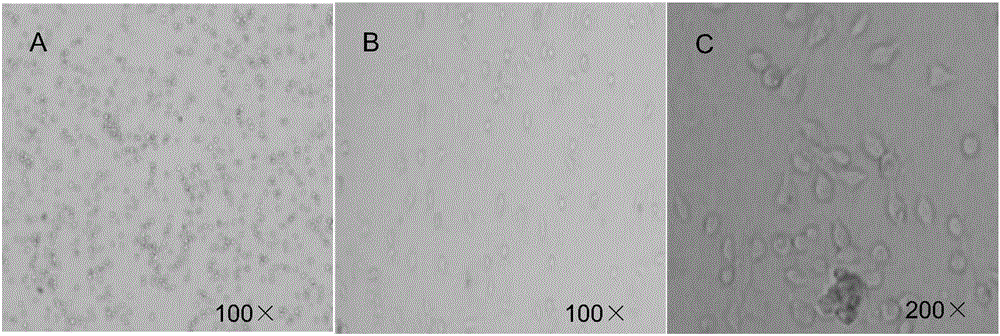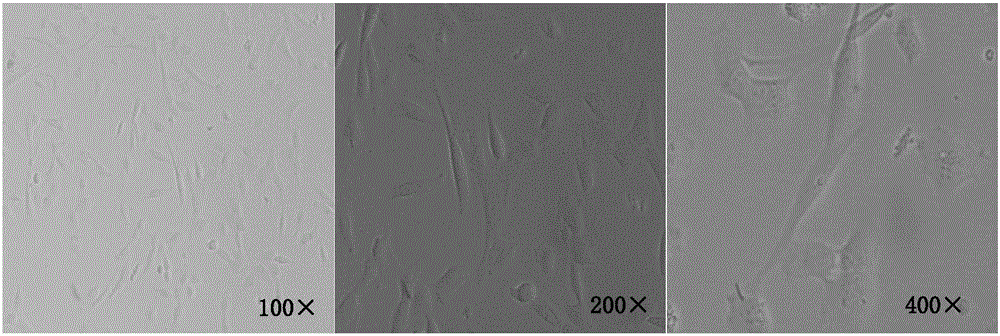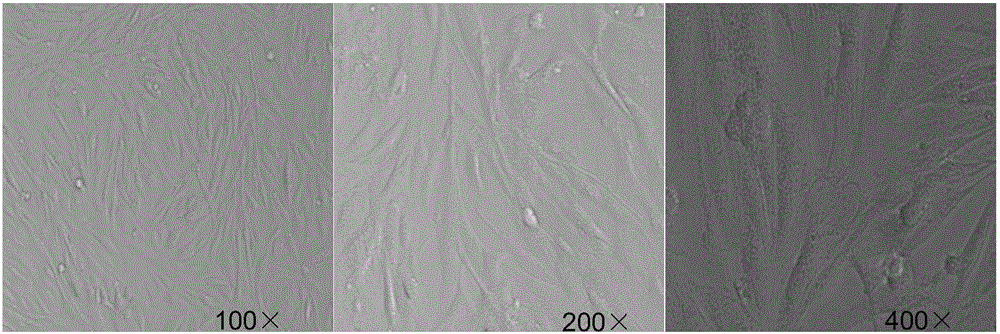Method for carrying out isolated culture on animal embryo liver stem cells
A liver stem cell, separation and culture technology, applied in the field of cell separation, can solve the problems of complicated operation and high cost of separation, purification and culture of embryonic liver stem cells, and achieve the effects of ensuring digestion efficiency, controlling digestion speed and good activity.
- Summary
- Abstract
- Description
- Claims
- Application Information
AI Technical Summary
Problems solved by technology
Method used
Image
Examples
Embodiment 1
[0061] 1) Take out the liver of the human embryo under aseptic conditions, place the embryonic liver tissue in a petri dish and wash it thoroughly with cold PBS at 4°C, then use ophthalmic scissors to cut the liver into 1mm×1mm×1mm tissue pieces, and again with Wash with cold PBS at 4°C to remove blood cells, and obtain liver tissue pieces after washing;
[0062] 2) Add 0.05% type IV collagenase solution dropwise to the cleaned liver tissue, and digest it in a 37°C water bath for 15 minutes; then, add an equal amount of DMEM / F12 complete culture solution to stop the digestion, and blow the mixture repeatedly with a pipette , and filtered with a 200-mesh sieve to obtain liver stem single cell suspension;
[0063] 3) Centrifuge the hepatic stem single-cell solution obtained in step 2) for 5 min under a centrifugal force of 55×g, and transfer the supernatant obtained after centrifugation to another container, and place it on ice.
[0064] 4) Add PBS solution again to the precipi...
experiment example 1
[0071] 1) The purified hepatic stem cells of Example 1 were inoculated on coverslips pre-treated with 0.2% gelatin, then placed in 24-well culture plates, and incubated at 37° C., 5% CO 2 Cultivate in an incubator under conditions for 24 hours, until the hepatic stem cells grow into a single layer; then, discard the culture medium, wash the cultured cells with PBS solution 3 times (5min / time), and then add 4% paraformaldehyde to fix for 25min;
[0072] 2) Wash the fixed cells with PBS, and then permeabilize the cells with 0.3% TritonX-100 for 10 min;
[0073] 3) Wash the permeabilized cells with PBS, and block with goat serum for 50 min;
[0074] 4) Add anti-AFP, CK18, AAT, CK19 antibodies (1:100) to the blocked cells respectively, place them in a wet box, and culture overnight at 4°C;
[0075] 5) Immunofluorescence cytochemical detection: wash part of the overnight cultured cells in step 4) with PBS solution, then add Alexa Fluor 488 Conjugate secondary antibody (1:200), and...
PUM
 Login to View More
Login to View More Abstract
Description
Claims
Application Information
 Login to View More
Login to View More - R&D
- Intellectual Property
- Life Sciences
- Materials
- Tech Scout
- Unparalleled Data Quality
- Higher Quality Content
- 60% Fewer Hallucinations
Browse by: Latest US Patents, China's latest patents, Technical Efficacy Thesaurus, Application Domain, Technology Topic, Popular Technical Reports.
© 2025 PatSnap. All rights reserved.Legal|Privacy policy|Modern Slavery Act Transparency Statement|Sitemap|About US| Contact US: help@patsnap.com



